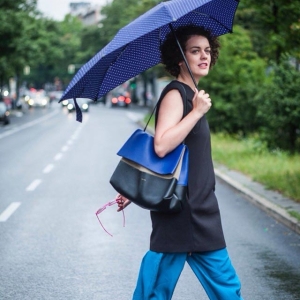
The well-known Senz storm umbrella is a Dutch design by a student from TU Delft (2005). In 2009, Senz was granted a European design right to two design variants of this umbrella. This was followed by a legal battle for these rights, which resulted recently in a decision by the European General Court.
1. Which companies were the opposing parties in this court case?
Two Dutch companies: Senz Technologies B.V., the inventor and producer of the storm umbrella, and Impliva B.V., a producer and supplier of umbrellas.
2. Exactly what was the case about?
Impliva believes that the design registrations that Senz has submitted are invalid and must be removed from the register, after which Senz will no longer be able to benefit from exclusivity. The company also invokes an older American patent application for a similar umbrella. This application was submitted several years before the Senz design application. Impliva believes that the Senz umbrella lacks the novelty required for a valid design registration as a result. It also states that any sector insider would be (or ought to have been) aware of a publication of this nature.
3. What was the decision?
The General Court delivered a balanced decision. On the one hand, it states that insiders could reasonably have been aware of this US publication. Of particular importance was the fact that both aesthetic and functional aspects of an umbrella of this nature are of interest. The General Court is of the opinion that, in a case like this, patent registers must be consulted in the US too. However, the General Court ‘saves’ Senz in the second part of its decision. Here the question arises as to whether an informed user would have the same general impression of the patented umbrella and the design. According to the General Court, this is not the case. Because the freedom of design for umbrellas is very limited, just a very minor deviation in the design will be enough to ensure that the rights of third parties are not infringed. As such, the Senz design is similar to the American counterpart but is sufficiently different.
4. Which consequences are there?
As such, the design registrations that Senz has submitted still stand up to scrutiny. However, the grounds given will have consequences that may be less beneficial for Senz. If another party develops a new storm umbrella that deviates just a little bit from the Senz designs, the minor deviation will probably mean that the party has already met the criterion of novelty. The protection possible for the Senz design is quite limited as a result.
5. What can we learn from this case?
Publications from outside the EU can be prejudicial to the novelty of an EU design. Added to this: even when designs would seem to be very similar at first sight, the functional nature of a product may mean that minor differences are decisive.

